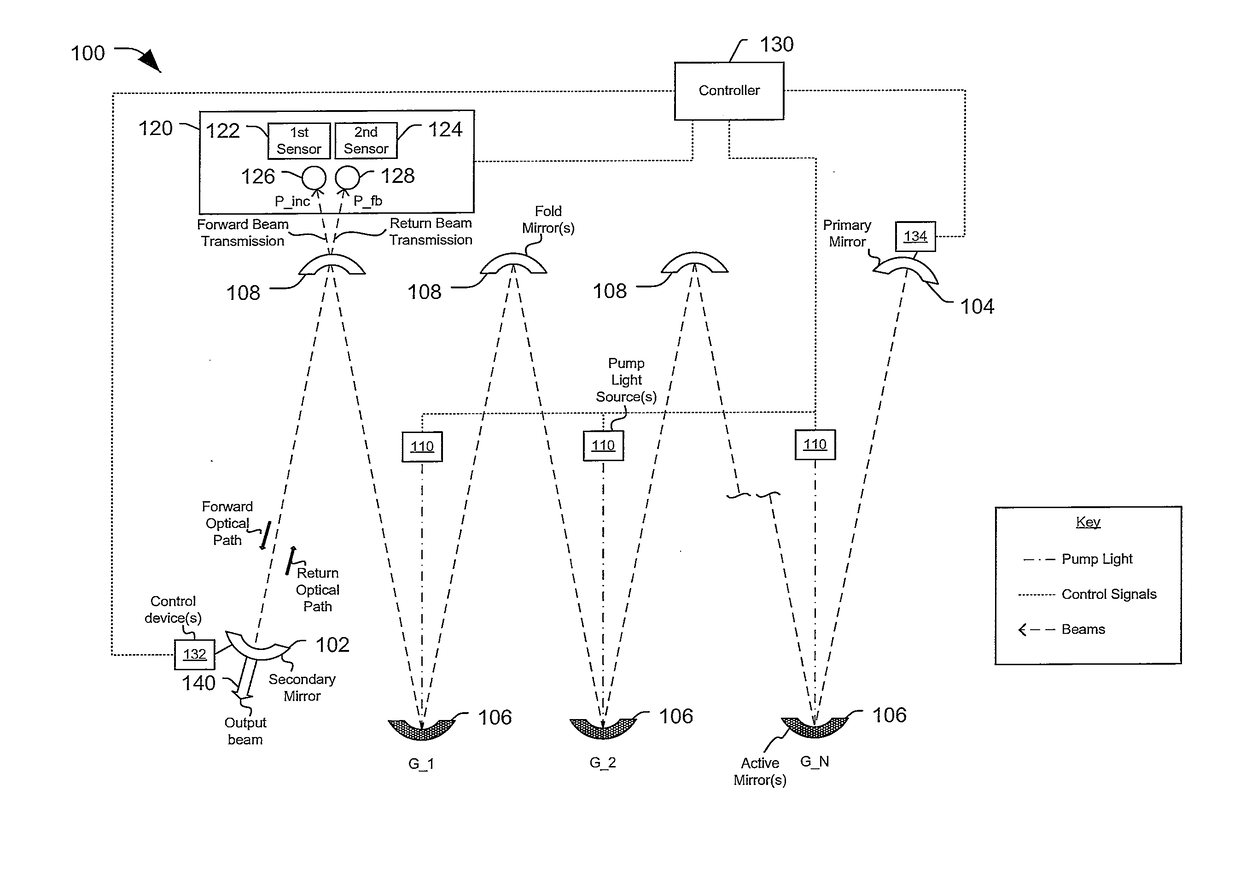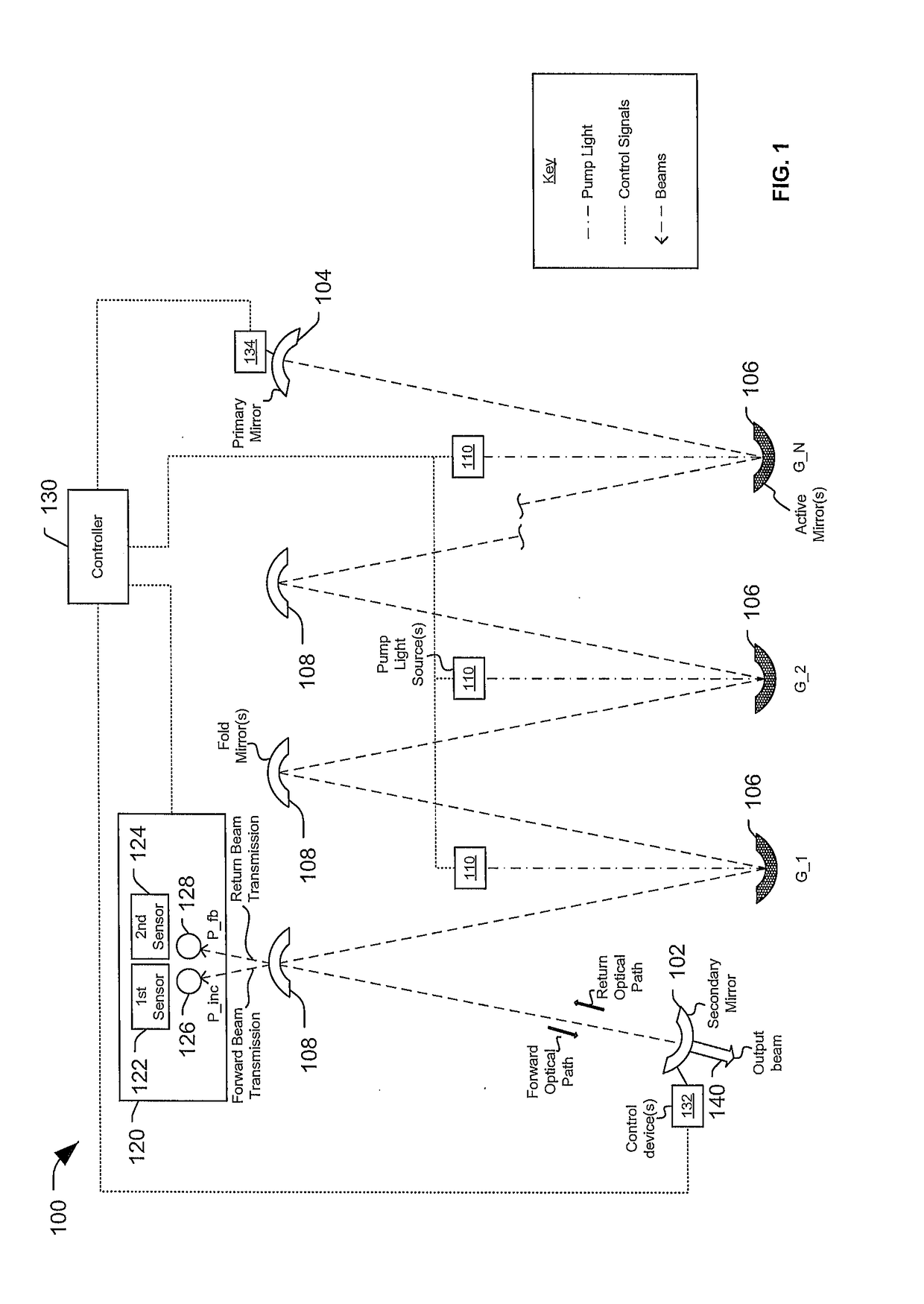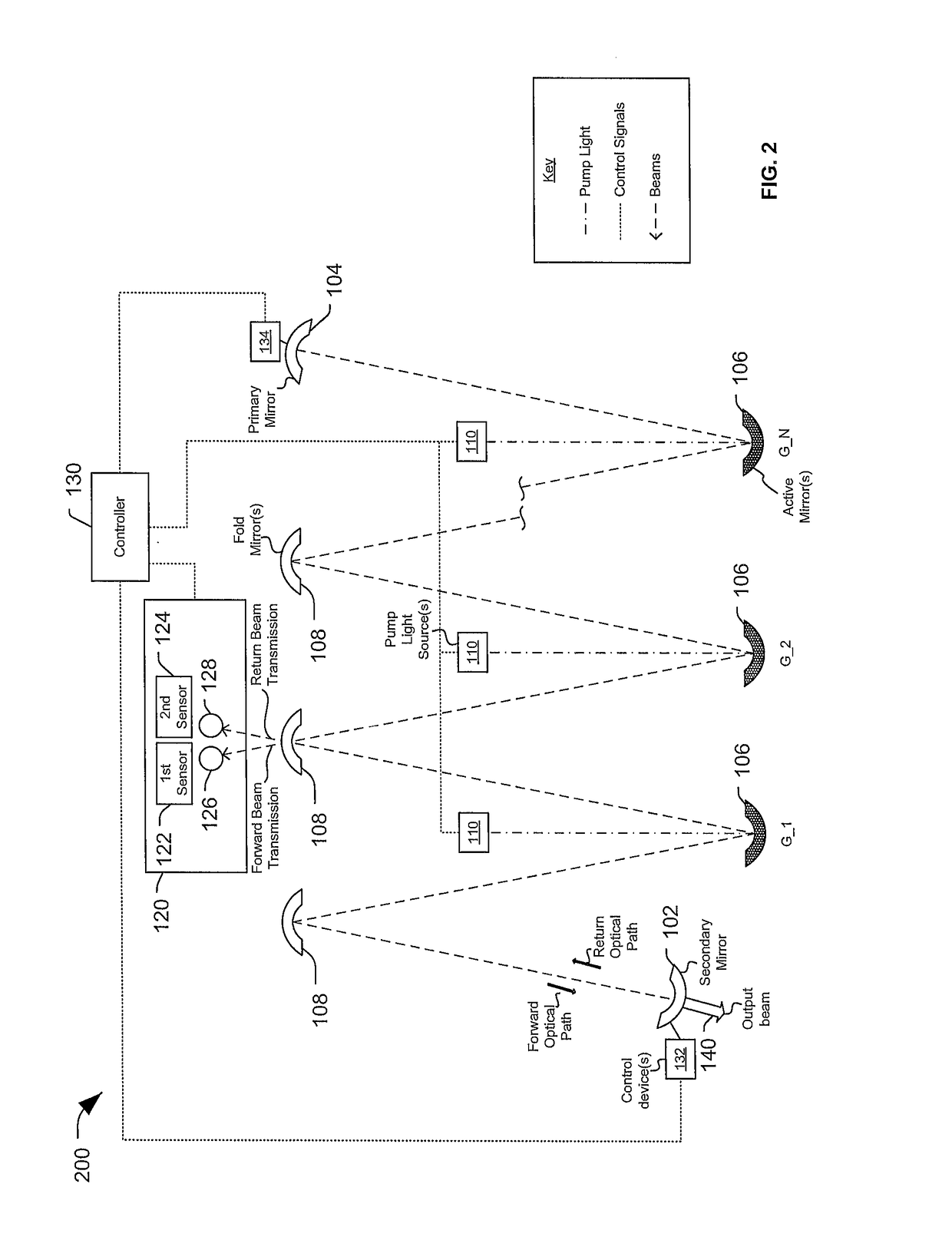Energy ratio sensor for laser resonator system
a laser resonator and energy ratio technology, applied in the field of energy ratio sensors, can solve the problems of difficult control and monitoring, components are not perfectly reflective or transmissive, and the output power of the laser resonator system may not provide an accurate estimate of the power of light beams reflected within so as to reduce the possibility of or prevent damage to improve the efficiency of the laser resonator system, and ensure the stability of the system
- Summary
- Abstract
- Description
- Claims
- Application Information
AI Technical Summary
Benefits of technology
Problems solved by technology
Method used
Image
Examples
Embodiment Construction
[0013]Particular embodiments of the present disclosure are described below with reference to the drawings. In the description, common features are designated by common reference numbers throughout the drawings.
[0014]FIG. 1 illustrates a particular embodiment of a laser resonator system 100. The laser resonator system 100 illustrated in FIG. 1 is shown as an unstable thin disk laser resonator system. However, in other embodiments, other laser resonator systems may be used, such as a slab resonator system as illustrated in FIG. 3. In FIG. 1, the laser resonator system 100 includes a secondary mirror 102 (also known as an output coupler). The secondary mirror 102 is configured to reflect a first portion of light (e.g., a beam) received at the secondary mirror 102 along a return optical path toward a primary mirror 104 of the laser resonator system 100. The secondary mirror 102 is also configured to allow a second portion of the light received at the secondary mirror 102 to pass through...
PUM
 Login to View More
Login to View More Abstract
Description
Claims
Application Information
 Login to View More
Login to View More - R&D
- Intellectual Property
- Life Sciences
- Materials
- Tech Scout
- Unparalleled Data Quality
- Higher Quality Content
- 60% Fewer Hallucinations
Browse by: Latest US Patents, China's latest patents, Technical Efficacy Thesaurus, Application Domain, Technology Topic, Popular Technical Reports.
© 2025 PatSnap. All rights reserved.Legal|Privacy policy|Modern Slavery Act Transparency Statement|Sitemap|About US| Contact US: help@patsnap.com



